Embark on a Journey Through Titanium's Machining Marvels
Greetings, machining enthusiasts! Have you ever wondered if titanium, that resilient and lightweight metal, can truly be harnessed through CNC machining? I'm here to not only answer your burning question but to delve into the intricacies, challenges, and best practices associated with machining titanium. As Richconn, your go-to precision machine shop, let's unlock the full potential of this extraordinary material together.
In the realm of CNC machining, understanding the nuances of mechanical machining is paramount to unlocking the true potential of titanium. The mechanical properties of titanium play a pivotal role in determining its machinability and the quality of the final product. Let's delve deeper into the critical factors that make mechanical machining an indispensable aspect of working with titanium.
Table: Mechanical Properties of Titanium
| Property | Value |
|---|---|
| Density | 4.51 g/cm³ |
| Melting Point | 1,668°C |
| Tensile Strength | 434 MPa (at room temp.) |
| Modulus of Elasticity | 116 GPa |
These properties lay the foundation for the machining process, influencing tool selection, cutting parameters, and overall machining strategies.
Titanium's unique set of mechanical properties sets it apart from other commonly machined metals like aluminum or stainless steel. Let's embark on a comparative analysis to understand why CNC machining specialists often opt for titanium in specific applications.
Table: Mechanical Comparison - Titanium vs. Aluminum vs. Stainless Steel
| Property | Titanium | Aluminum | Stainless Steel |
|---|---|---|---|
| Density (g/cm³) | 4.51 | 2.70 | 7.85 |
| Tensile Strength (MPa) | 434 (at room temp.) | 110 | 520 |
| Modulus of Elasticity (GPa) | 116 | 69 | 193 |
| Melting Point (°C) | 1,668 | 660 | 1,430 |
This detailed comparison aids in making informed decisions when selecting materials for CNC machining projects.
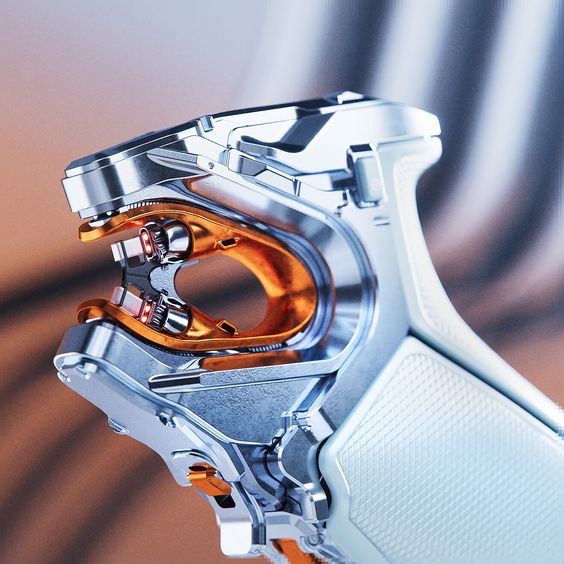
Precision in cutting titanium is an art that requires a deep understanding of the material's characteristics. The choice of cutting tools becomes a crucial factor in achieving the desired precision. Titanium's unique combination of strength and low thermal conductivity presents both challenges and opportunities. To enhance precision, CNC machining specialists often opt for specialized high-speed steel or carbide tools.
Table: Recommended Tool Materials for Titanium Machining
| Tool Material | Advantages | Disadvantages |
|---|---|---|
| High-Speed Steel | Good toughness and wear resistance | Limited cutting speed |
| Carbide | High cutting speeds, suitable for high-temperature cuts | Brittle, may chip under impact |
Understanding the intricacies of tool materials empowers CNC operators to make informed decisions, ensuring precision in every cut.
Shaping titanium components involves employing specific strategies to navigate its unique challenges. Traditional shaping methods may fall short when dealing with titanium's high melting point and low thermal conductivity. CNC machining introduces advanced shaping technologies such as electrical discharge machining (EDM) and laser cutting, each with its distinct advantages in achieving intricate shapes with minimal material stress.
Table: Shaping Technologies for Titanium
| Shaping Technology | Advantages | Disadvantages |
|---|---|---|
| Electrical Discharge Machining (EDM) | Precise, can achieve complex shapes | Slow for bulk material removal |
| Laser Cutting | High precision, minimal material stress | Limited to certain thicknesses |
Understanding the strengths and limitations of these shaping technologies enables CNC operators to choose the most suitable approach for a given project.
Achieving impeccable surface finishes in titanium machining is essential for both aesthetic and functional reasons. Post-machining treatments play a crucial role in enhancing the surface quality. Processes like chemical etching, passivation, and shot peening are commonly employed to improve the corrosion resistance and overall aesthetics of titanium components.
Table: Surface Finishing Techniques for Titanium
| Surface Finishing Technique | Advantages | Disadvantages |
|---|---|---|
| Chemical Etching | Precise control over surface texture | Limited to certain geometries |
| Passivation | Enhanced corrosion resistance | Requires careful handling |
| Shot Peening | Improved fatigue resistance | Impact on surface aesthetics |
Understanding the nuances of surface finishing techniques allows CNC machining specialists to tailor the finish to meet specific project requirements.
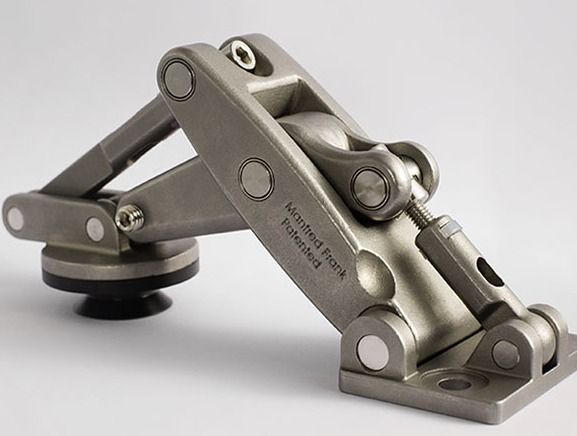
Optimizing the CNC machining workflow for titanium demands a meticulous approach. Every step in the process contributes to the overall efficiency and quality of the final product. Streamlining involves a combination of process optimization, toolpath planning, and the integration of advanced machining technologies. Let's delve into the key considerations for streamlining titanium machining processes.
Table: Key Considerations for Streamlining Titanium Machining
| Consideration | Description |
|---|---|
| Toolpath Planning | Optimal toolpath design for reduced tool wear and heat buildup |
| Cutting Parameters Optimization | Fine-tuning speeds and feeds for improved efficiency |
| Workholding Solutions | Secure and stable workholding setups for precision machining |
| Coolant Selection | High-performance coolants to manage heat during machining |
Mastering these considerations ensures a streamlined and efficient titanium machining process.
The intricacies of cutting parameters play a crucial role in the success of titanium machining. Fine-tuning speeds, feeds, and cutting depths requires a nuanced understanding of titanium's response to machining forces. CNC operators must consider the following factors when optimizing cutting parameters:
Table: Recommended Cutting Parameters for Titanium
| Parameter | Recommendation |
|---|---|
| Cutting Speed (m/min) | 30-60 (based on tool material and diameter) |
| Feed Rate (mm/tooth) | 0.05-0.15 (adjusted based on tool geometry) |
| Depth of Cut (mm) | 0.2-0.5 (considering tool strength and stability) |
Fine-tuning cutting parameters is an ongoing process, requiring continuous monitoring and adjustment for optimal results.
Beyond the technical aspects, safety and environmental considerations are paramount in titanium machining. The inherent challenges, such as the generation of fine titanium dust and the use of coolants, require careful attention. Implementing safety protocols and environmentally friendly practices ensures a sustainable and responsible approach to titanium CNC machining.
Table: Safety and Environmental Considerations
| Consideration | Description |
|---|---|
| Personal Protective Equipment | Proper use of masks, gloves, and eye protection |
| Dust Extraction Systems | Efficient systems to capture and contain titanium dust |
| Eco-Friendly Coolants | Adoption of coolant formulations with minimal impact |
Prioritizing safety and sustainability not only protects personnel but also aligns with global environmental responsibilities.
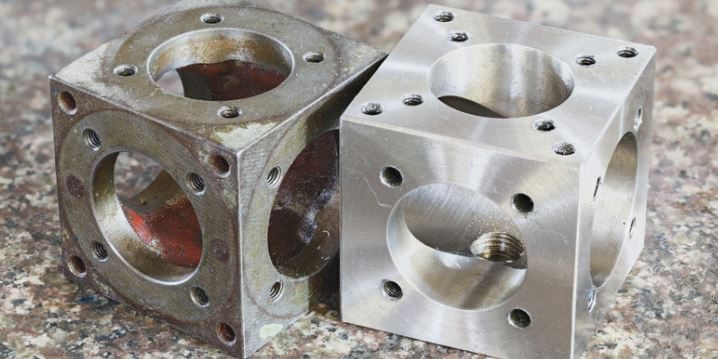
The high melting point of titanium poses a significant challenge in CNC machining, leading to thermal effects that can affect tool life and material integrity. Tackling thermal effects involves a multi-faceted approach, including advanced cooling systems, optimized cutting parameters, and tool coatings designed to withstand elevated temperatures.
Table: Solutions for Managing Thermal Effects
| Solution | Description |
|---|---|
| Advanced Cooling Systems | Efficient coolant delivery systems for heat dissipation |
| Optimal Cutting Parameters | Fine-tuned speeds and feeds to minimize heat buildup |
| Coated Tools | Application of specialized coatings for heat resistance |
Implementing these solutions ensures a controlled machining environment, minimizing the impact of thermal effects on titanium components.
The abrasive nature of titanium can pose challenges to tool longevity, impacting both cost-effectiveness and machining efficiency. Extending tool life involves careful selection of tool materials, coatings, and strategies to mitigate wear. Let's explore effective solutions for enhancing tool longevity in titanium machining.
Table: Strategies for Prolonging Tool Longevity
| Strategy | Description |
|---|---|
| High-Performance Coatings | Application of coatings for increased tool durability |
| Regular Tool Inspection | Periodic checks to detect wear and prevent tool failure |
| Toolpath Optimization | Efficient toolpath planning for reduced tool stress |
Adopting these strategies contributes to the longevity of tools, minimizing downtime and overall machining costs.
Achieving precision and high-quality surface finishes in titanium machining is the ultimate goal. Understanding the factors influencing precision, such as tool selection, cutting parameters, and machine stability, is crucial. Let's delve into the solutions and best practices for ensuring impeccable precision and surface quality.
Table: Solutions for Precision and Surface Quality
| Solution | Description |
|---|---|
| High-precision Tooling | Use of specialized tools for intricate machining |
| Rigorous Quality Control | Implementing strict quality checks throughout the process |
| Vibration Damping Systems | Integration of systems to minimize machine vibrations |
Adhering to these solutions elevates the precision and surface quality of titanium components, meeting the highest standards of CNC machining.
The medical industry is a significant beneficiary of titanium's unique properties. Its biocompatibility, corrosion resistance, and strength make it an ideal choice for medical devices. CNC machining plays a crucial role in the production of intricate components for implants, surgical tools, and diagnostic equipment.
Table: Titanium Applications in Medical Devices
| Application | Description |
|---|---|
| Orthopedic Implants | Titanium implants for joint replacements |
| Dental Implants | Biocompatible dental implants for long-term use |
| Surgical Instruments | Precision-machined tools for surgical procedures |
Understanding the specific requirements of medical applications ensures CNC machining aligns with the stringent standards of the healthcare industry.
Titanium's lightweight yet robust nature makes it indispensable in the aerospace sector. From aircraft components to spacecraft structures, titanium's role is irreplaceable. CNC machining contributes to the fabrication of complex aerospace parts, ensuring reliability and performance under extreme conditions.
Table: Titanium Applications in Aerospace
| Application | Description |
|---|---|
| Aircraft Components | Lightweight structural elements for enhanced fuel efficiency |
| Engine Components | High-strength, heat-resistant parts for aerospace engines |
| Spacecraft Structures | Precision-machined components for spacecraft construction |
CNC machining's precision and efficiency are critical in meeting the stringent demands of aerospace engineering.
The energy industry leverages titanium's corrosion resistance and durability for various applications. From oil and gas to renewable energy, titanium components withstand harsh environments. CNC machining ensures the production of components with the required precision and reliability.
Table: Titanium Applications in the Energy Sector
| Application | Description |
|---|---|
| Oil and Gas Equipment | Corrosion-resistant components for offshore installations |
| Renewable Energy Components | Precision parts for wind turbines and solar installations |
| Nuclear Power Plant Parts | High-strength components for critical nuclear infrastructure |
The versatility of titanium, coupled with CNC machining capabilities, contributes significantly to advancements in the energy sector.
The world of materials science is ever-evolving, and titanium is no exception. Ongoing research is focused on developing novel titanium alloys with enhanced properties, including improved machinability. CNC machining specialists need to stay abreast of these advancements to adapt their processes to accommodate new materials efficiently.
Table: Emerging Titanium Alloys and Their Characteristics
| Alloy Type | Characteristics |
|---|---|
| Beta Titanium Alloys | Increased strength and heat resistance |
| Additive Manufactured Ti | Complex geometries achievable through 3D printing |
| High-Strength Titanium Alloys | Enhanced mechanical properties for specific applications |
Understanding these emerging materials ensures CNC machining services remain at the forefront of innovation.
The field of CNC machining is witnessing rapid technological advancements. From smarter toolpath planning algorithms to real-time monitoring systems, innovations in CNC technology significantly impact titanium machining. Integrating these technologies enhances precision, efficiency, and overall process control.
Table: Cutting-Edge CNC Technologies for Titanium Machining
| Technology | Advantages |
|---|---|
| Real-Time Monitoring Systems | Immediate detection of issues for proactive solutions |
| Adaptive Machining Systems | Dynamic adjustments based on real-time performance |
| Artificial Intelligence in Toolpath Planning | Enhanced efficiency through intelligent algorithms |
Embracing these innovations positions CNC machining services for future success in titanium machining.
As industries globally shift towards sustainability, titanium machining must align with eco-friendly practices. Sustainable CNC machining involves optimizing processes to minimize waste, utilizing energy-efficient equipment, and exploring alternative coolant options.
Table: Sustainable Practices in Titanium Machining
| Practice | Description |
|---|---|
| Recycling Titanium Scraps | Efficient collection and recycling of machining waste |
| Energy-Efficient Equipment | Adoption of CNC machines with low energy consumption |
| Green Coolants | Environmentally friendly coolant formulations |
Prioritizing sustainability not only contributes to environmental responsibility but also aligns with the evolving expectations of industries worldwide.
As we conclude this in-depth exploration of CNC machining with titanium, it's evident that the collaboration between technology and material science is reshaping industries. Richconn, as your dedicated CNC machining service provider, stands at the forefront of these advancements.
In embracing the intricacies of titanium's mechanical properties, navigating cutting-edge machining technologies, and anticipating future trends, Richconn ensures that your projects are not just manufactured but meticulously crafted. The tables provided throughout this guide serve as practical references, aiding CNC operators in making informed decisions at every step of the machining process.
The applications of titanium across medical, aerospace, and energy sectors underscore its versatility. Richconn's commitment to precision, quality, and sustainability aligns seamlessly with the evolving demands of these dynamic industries.
As we look to the future, the continuous pursuit of novel materials, innovations in CNC technology, and a steadfast commitment to sustainable practices will further elevate titanium CNC machining. Richconn remains poised to lead the charge, providing not just machining services but a strategic partnership in realizing your visions.
Connect with Richconn today, and let's shape the future of CNC machining together. Your titanium masterpiece awaits its moment of creation.
![Examining Alloy Definition and Alloying Examples [Basic Guide]](/uploads/image/20240226/14/basic-guide_400x400.webp) Examining Alloy Definition and Alloying Examples [Basic Guide]February 26, 2024Learn from alloy definitions and alloying examples, which can help you choose the best alloy for your project.view
Examining Alloy Definition and Alloying Examples [Basic Guide]February 26, 2024Learn from alloy definitions and alloying examples, which can help you choose the best alloy for your project.view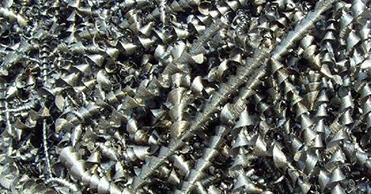 Chip Types Of Automatic Gear Production Line And Application Scope Of Chip Treatment SystemApril 12, 2022This paper studies the characteristics of different kinds of chips produced in the process of gear machining and gives the corresponding treatment scheme, which provides technical support for the auto...view
Chip Types Of Automatic Gear Production Line And Application Scope Of Chip Treatment SystemApril 12, 2022This paper studies the characteristics of different kinds of chips produced in the process of gear machining and gives the corresponding treatment scheme, which provides technical support for the auto...view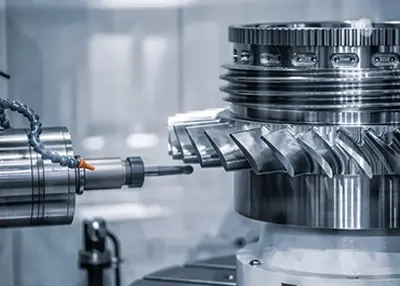 Importance Of CNC Machining In Manufacturing Different PartsOctober 24, 2023CNC machining services help you to manufacture and fabricate different parts of metal as per the requirements. This process also helps in creating tolerances for various materials and metal parts. This process is usually a subtractive method of producing metal parts.view
Importance Of CNC Machining In Manufacturing Different PartsOctober 24, 2023CNC machining services help you to manufacture and fabricate different parts of metal as per the requirements. This process also helps in creating tolerances for various materials and metal parts. This process is usually a subtractive method of producing metal parts.view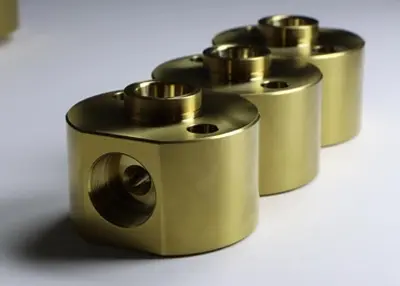 6 Aspects of Optimizing Part Design For CNC MachiningOctober 16, 2023The rapid and cost-effective production of prototypes and series parts by CNC machining is often a balancing act. Both the capabilities of the manufacturing process and the part itself as an optimized, functional component must be considered. So when designing parts for machining with Richconn milling and CNC turning parts, there are a few key points to consider to shorten manufacturing time and reduce costs.view
6 Aspects of Optimizing Part Design For CNC MachiningOctober 16, 2023The rapid and cost-effective production of prototypes and series parts by CNC machining is often a balancing act. Both the capabilities of the manufacturing process and the part itself as an optimized, functional component must be considered. So when designing parts for machining with Richconn milling and CNC turning parts, there are a few key points to consider to shorten manufacturing time and reduce costs.view The Crucial World of Mechanical Testing for Materials: Insights and ImportanceJuly 22, 2024Mechanical testing is the key to understanding materials' reliability and performance. Let’s find out its vital role in industries, types of tests, features, etc. in this article!view
The Crucial World of Mechanical Testing for Materials: Insights and ImportanceJuly 22, 2024Mechanical testing is the key to understanding materials' reliability and performance. Let’s find out its vital role in industries, types of tests, features, etc. in this article!view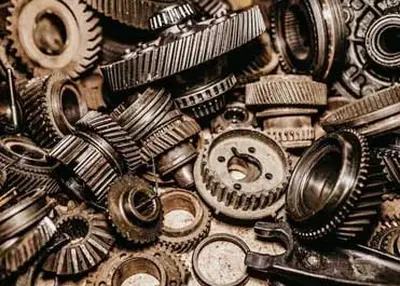 Basic of Gear Manufacturing: A Guide to Learn about Gear Production ProcessesAugust 29, 2023There is no single process for manufacturing gear because several processes are required based on the type and application. The gears need to be in absolutely perfect condition to adapt to strenuous c...view
Basic of Gear Manufacturing: A Guide to Learn about Gear Production ProcessesAugust 29, 2023There is no single process for manufacturing gear because several processes are required based on the type and application. The gears need to be in absolutely perfect condition to adapt to strenuous c...view